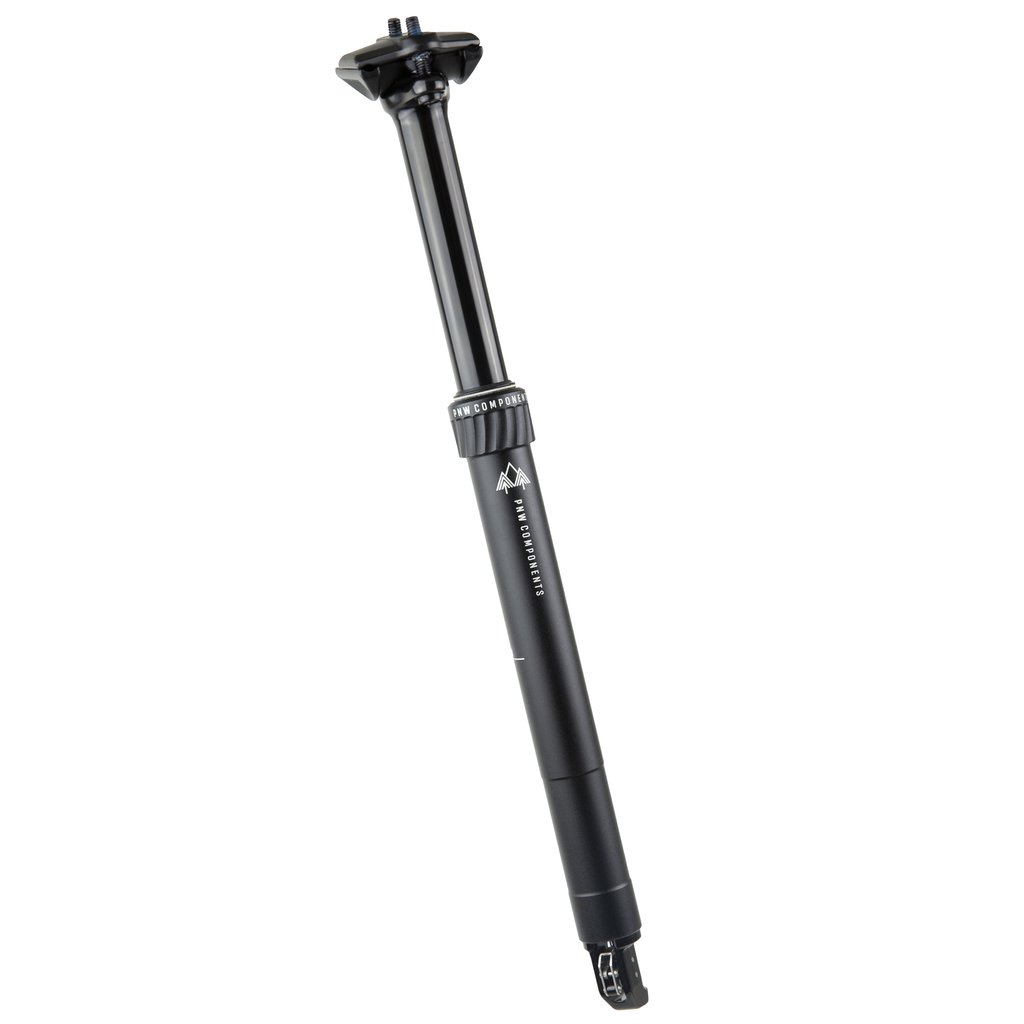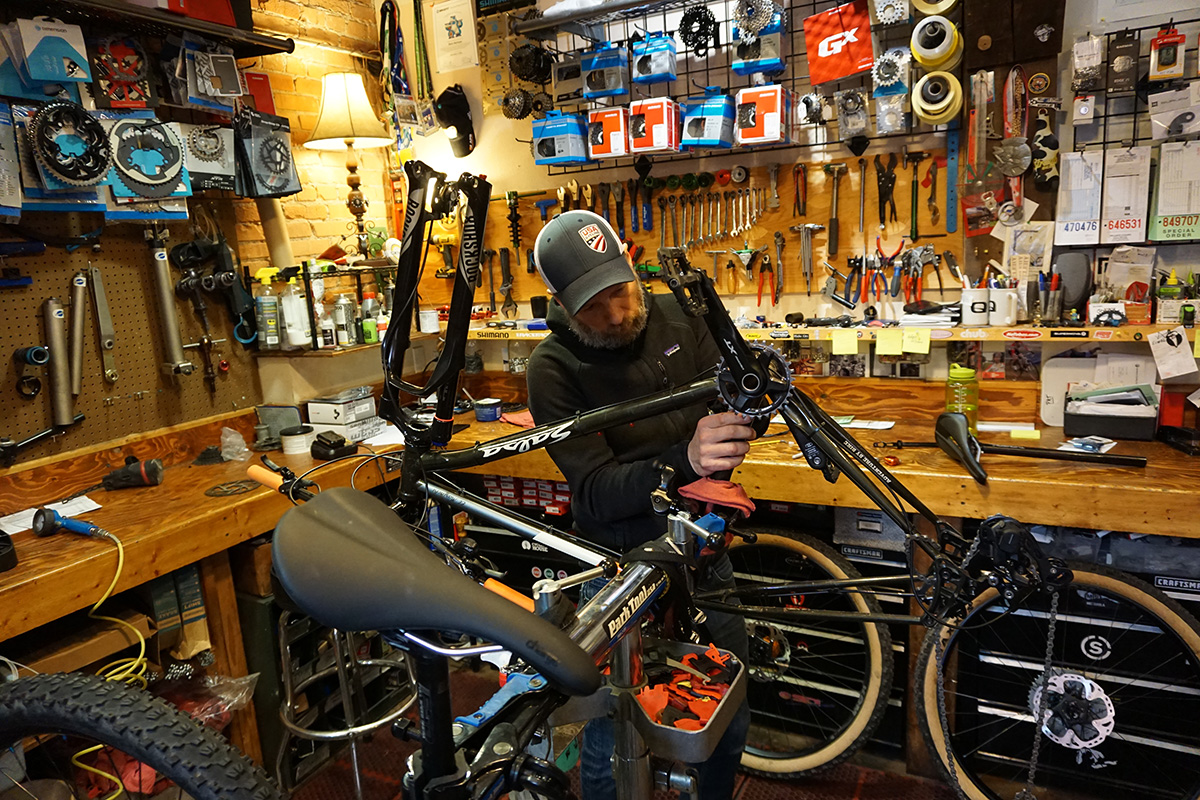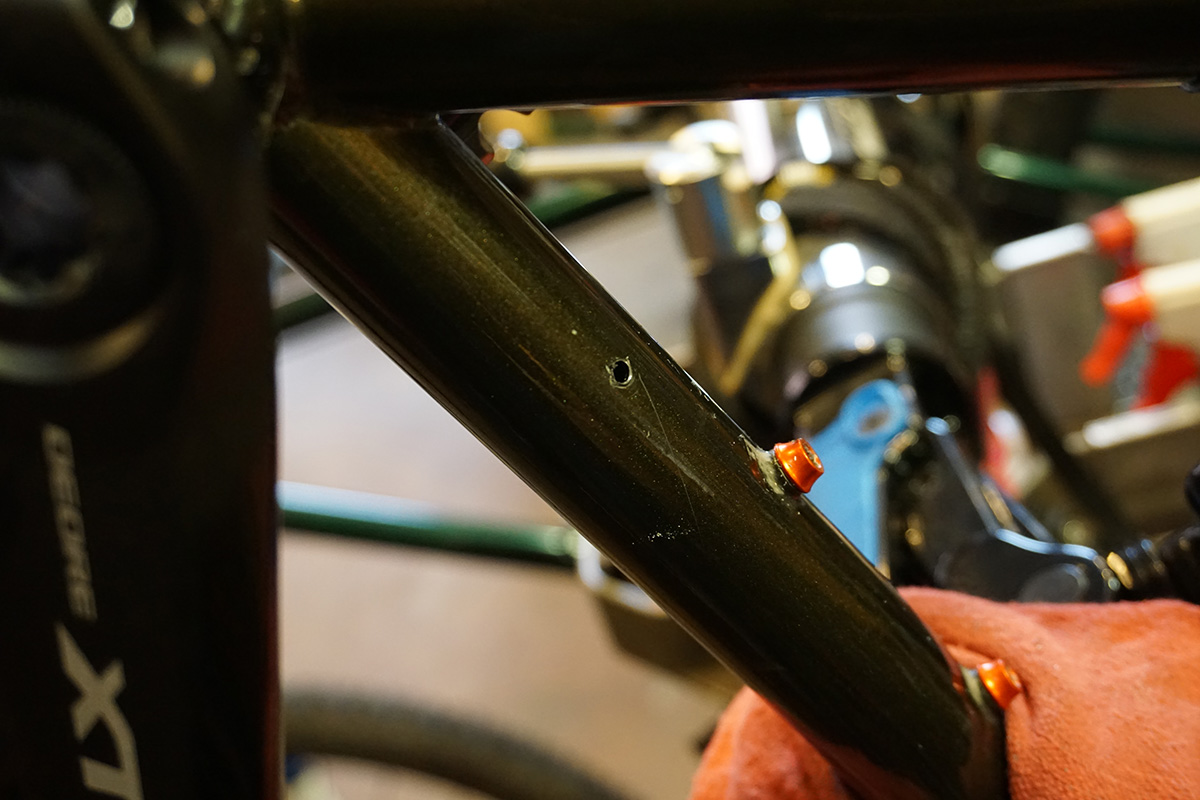Geared Up: Dropper Posts for Bikepacking
Some readers of Adventure Cyclist might dismiss a dropper seatpost as a superfluous accessory, a sign of the bicycle world straying into vanity and decadence. I disagree. Much like hydraulic disc brakes and tubeless tires, dropper posts have changed how I ride mountain bikes, and I now see a dropper as necessary equipment, no less important than wheels and a handlebar.
When riding singletrack, the ability to drop the seat and get low is invaluable whether I’m loaded for an overnight or bag-free. In fact, you could argue that a dropper is a safety feature when it comes to bikepacking. Have you ever tried to get around a steep, tight switchback on a loaded rig? Dropping your seat lowers your center of gravity and makes it easier to put a foot down should you find yourself in trouble. And, as a nice little bonus, a dropper makes it easier to mount your bike.

PNW Rainier IR 27.2, $219
Among the sea of dropper posts these days, many costing well north of $400, few brands offer anything close to a bargain. PNW, a component brand based in, well, the Pacific Northwest, has a few droppers that are refreshingly priced.
When choosing a dropper, I had a few criteria. I wanted one that was cable-actuated (no hydraulic line to bleed), simple, and serviceable. And, because my Salsa El Mariachi sports an outdated seat tube diameter, it needed to be 27.2mm.
For years, the only 27.2mm dropper post on the market that was worth looking at was the Thomson Elite dropper, and it costs nearly $500. Since then, more 27.2mm droppers popped up briefly and then dropped out of sight for one reason or another. According to PNW’s Aaron Kerson, the reason there are so few 27.2mm droppers is because of space constraints. A tube with a smaller diameter is inherently weaker, and because droppers have moving parts inside them, you can’t just give the tube thicker walls to strengthen it. This lack of available space also contributes to the shorter travel found in 27.2mm droppers — most are 125mm travel or less.
Lucky for me, PNW offers a couple of 27.2 droppers, and for this build I chose the Rainier IR with 105mm of travel. Like most droppers, the Rainier has a sealed hydraulic cartridge, but instead of the usual air spring, it has a coil. According to Kerson, PNW went with a coil spring for the Rainier because it’s reliable and more cost effective than an air spring.
The Rainier IR was simple to set up, and it’s worked perfectly from day one, with one notable exception. While on an autumn bikepacking mission near Butte, Montana, I noticed that the Rainier didn’t much like the cold. It was, after all, actively snowing. The dropper became a little recalcitrant — I had to help it pop back up a few times. Once back in warmer weather, though, it worked just fine.
I think the highest compliment to give any bike component is to call it invisible — it just plain works, and you don’t have to think about it. The Rainier was indeed invisible, with the exception of the radial-style lever that came with it. PNW’s lever worked just fine, but I prefer shifter-style dropper levers, so after a few weeks I replaced it with a unit from Wolf Tooth Components.
With a standard two-bolt saddle clamp, the Rainier played nice with my Porcelain Rocket Albert seatbag (see my review here), and the extra weight never seemed to slow the dropper’s return rate. (With many air-sprung droppers, you often have to increase the air pressure to compensate for the heft of a seatbag.) Kerson hasn’t tested how much weight the Rainier can handle, but he doesn’t foresee any issues. “We’ve had many folks throw on the larger packs with no issue, and I haven’t had a single complaint of overweighting, but the opportunity is definitely there,” he said.
Like every other dropper I’ve owned, there’s a small amount of lateral play in the stanchion, but it hasn’t gotten worse and it’s not something I notice while riding.
After months of use, the Rainier still runs smooth as butter. If in the future it starts to feel slow, service is pretty simple and requires only a few hand tools. And if it all goes to pot — and for whatever reason it isn’t covered under PNW’s three-year warranty — the cartridge is replaceable and goes for $75.
But wait, there’s more: by the time you read this, PNW will have, uh, raised the Rainier’s travel to 110mm and, um, dropped its price from $274 to $219. If I had a nickel for every time a bike component got both better and cheaper … well, I’d have one nickel.
Let’s Keep This Internal
The “IR” in Rainier IR stands for internally routed, and astute readers may have noticed that the Salsa El Mariachi does not have internal routing. Not from the factory, anyway. This is where things got interesting.
Purely for reasons of vanity, I wanted an internally routed dropper on my El Mar. So I visited my local shop. Dave at Hellgate Cyclery has been drilling holes in bike frames for years — he’s even drilled into carbon frames! So naturally he didn’t blink when I asked him to permanently disfigure my beloved Salsa.

It was a pretty simple process. Dave mounted my El Mar upside-down in the stand, hammered a center punch where the hole would be, and drilled away. He then smoothed it out with a file, cleaned out the shavings, and stuck a rubber gasket in there to protect the housing. It was all over in a few minutes, and I didn’t have a heart attack. Success!

Nota bene: Do this at your own risk. Drilling a hole into your frame is a good way to void your bike’s warranty, and in theory it could weaken whatever tube you just aerated. My El Mar’s seat tube has yet to buckle under the weight of my genius, but check with me next week. For those of you wanting a dropper without the need for power tools, PNW offers the Pine 27.2, which is similar in construction to the Rainier but with external routing.

